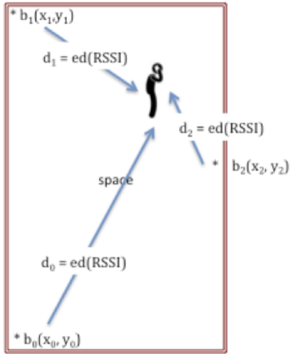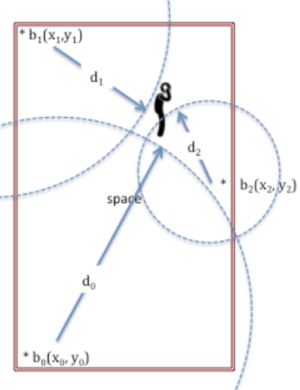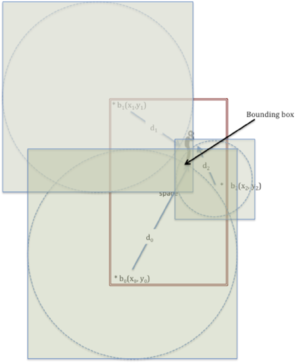RSSI-Based Position Estimation And Geo-Fencing Using Bluetooth
// Place. Standard NBCC.ca Header here //
RSSI-Based Position Estimation And Geo-Fencing Using Bluetooth
The NBCC Mobile First Technology initiative (MFTi) collaborated with IGT (formerly GTECH) on an investigation of geo-fencing and position estimation algorithms that employ Bluetooth 4.0 beacons and received signal strength indication (RSSI).
Research topics
Bluetooth 4.0, geofencing, iBeacon, position estimation, RSSI
Geo-fencing is a form of identification used to determine whether a mobile device is inside (or outside) a specified area (aka, a geo-fence). Position estimation attempts to calculate the coordinates (location) of a mobile device of interest.
MFTi collaborated with IGT (formerly GTECH) on an investigation of geo-fencing and position estimation algorithms that employ Bluetooth 4.0 beacons and received signal strength indication (RSSI). This included a custom bounding-box algorithm designed and implemented by NBCC. MFTi produced two proprietary technical reports for IGT.
RSSI is an indirect measure of received power (RX) from a transmitter. In our case, the transmitters were Bluetooth 4.0 beacons, such as the Estimote. Several mathematical models exist for estimating distance to a transmitter based on RSSI. The experiments performed thus far use the following equation cited in a number of places, including [Dahlgren 2014]:
<math>RSSI = -(10 N log 10 d + A) <\math>
In this equation, A is the absolute energy in dBm at 1m from the beacon; N is a measure of the “influence of walls and other obstacles” [Dahlgren 2014, Kotanen 2003]; and d is distance. The distance equation used in the experiments reported below is, thus
<math>d = 10 ^ (A-RSSI / 10N)<\math>
Figure 1. Estimating distances using RSSI for the bounding box algorithm.
Figure 2. Radii about each beacon based on estimated distance.
Figure 3. Finding the bounding box and estimated position.
References
- Dahlgren, E. and Mahmood, H., “Evaluation of indoor positioning based on Bluetooth® Smart technology," 2014.
- Kotanen, A., Hannikainen, M., Leppakoski, H., and Hamalainen, T. D. , “Experiments on local positioning with Bluetooth,” in Information Technology: Coding and Computing [Computers and Communications], 2003. Proceedings. ITCC 2003, 2003, pp. 297–303.
NBCC Team
- Russell Allen, Coordinating Instructor of Information Technology, NBCC Moncton
- David Morris, Instructor of Information Technology, NBCC Saint John
- Matthew McArthur, Research Assistant (NBIF)
- Wagner Faria Sodré Junior, Mitacs Globallink Scholar, Summer 2014
- William McIver Jr., Ph.D., NSERC Industrial Research Chair in Mobile First Technology, Co-Principal Investigator
Client–Collaborators
- Fayez Idris, Ph.D. IGT, Moncton, New Brunswick, Co-Principal Investigator
Funders
- IGT
- New Brunswick Innovation Fund - Research Assistantships Initiative
- Mitacs Globallink
- National Sciences and Engineering Research Council - Industrial Research Chair for Colleges
Project contact
William McIver Jr., Ph.D., NSERC Industrial Research Chair in Mobile First Technology, New Brunswick Community College


